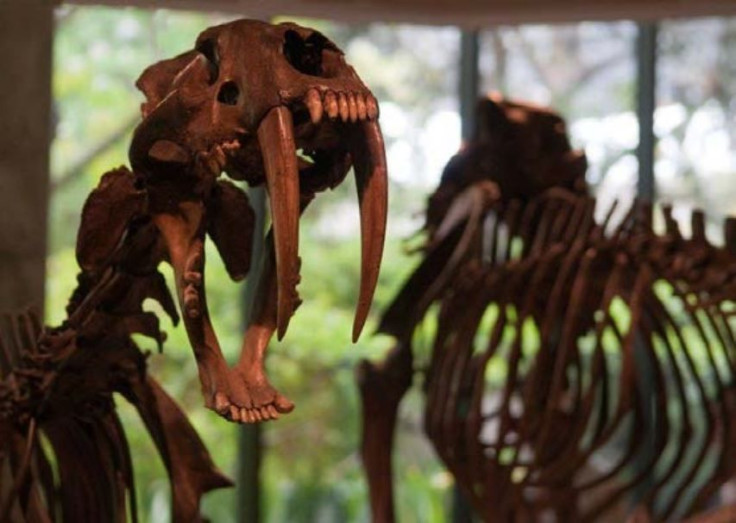Climate Change In Ice Age: Fossil Studies Show How Ancient Environment Affected Evolution Of Predators

Scientists have conducted new studies at the La Brea Tar Pits, the world’s richest and most important Ice Age fossil locality, which have provided a link between climate warming and the evolution of Ice Age predators, and may help predict how animals will respond to climate change today.
Researchers at the Page Museum in Los Angeles have conducted two new studies that document significant change over time in the skulls of both dire wolves and saber-toothed cats. According to the researchers, climate during the end of the Ice Age was unstable, with rapid warming and cooling, and the new research examines the impact of this climate change on La Brea predators for the first time.
“Different tar pits at La Brea accumulated at different times,” F. Robin O'Keefe of Marshall University, lead author on the dire wolf study, said in a statement. “When we compare fossils deposited at different times, we see big changes. We can actually watch evolution happening.”
According to the researchers, after the end of the last Ice Age, La Brea dire wolves became smaller and more graceful, adapting to hunt smaller prey as glaciers receded and climate warmed. The rapidly changing climate led to change in saber-toothed cats as well.
“Saber-toothed cats show a clear correlation between climate and shape. Cats living after the end of the Ice Age are larger, and adapted to taking larger prey,” Julie Meachen of Des Moines University and lead author of the saber-tooth study, said in the statement.
The researchers said that the emerging links between climate change and evolution requires further study, as there are many unanswered questions, such as why predators change in the ways that they do, the importance of factors other than climate and whether the arrival of humans played a role in the mass extinction at the end of the Ice Age.
“We can see animals adapting to a warming climate at La Brea. Then humans show up and all the big ones disappear. We haven't been able to establish causality there yet. But we are working on it,” said O’Keefe.
Watch the video here:
© Copyright IBTimes 2024. All rights reserved.






















